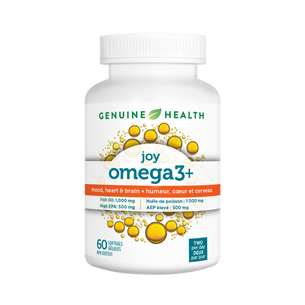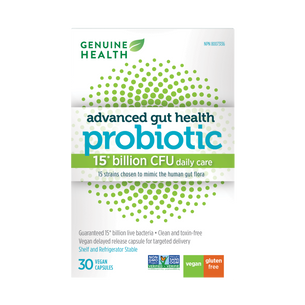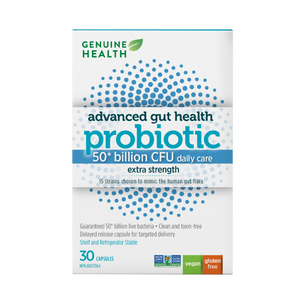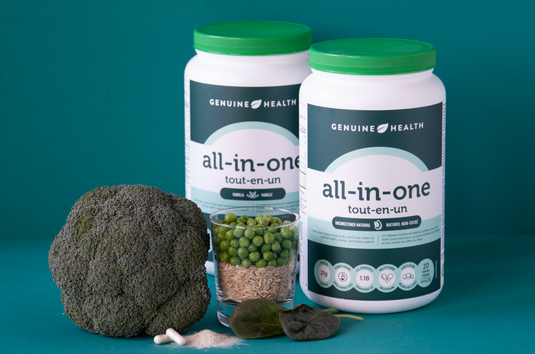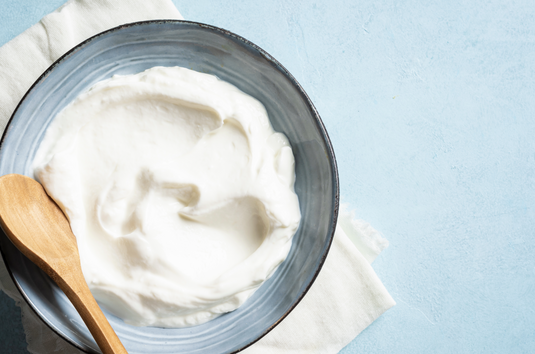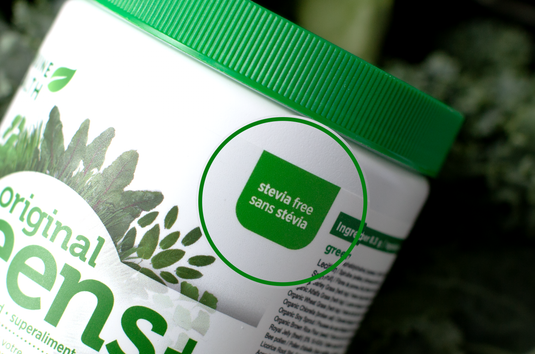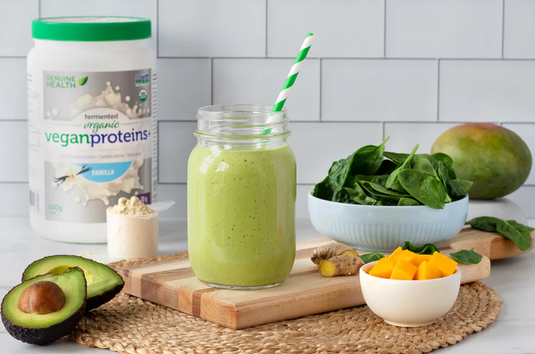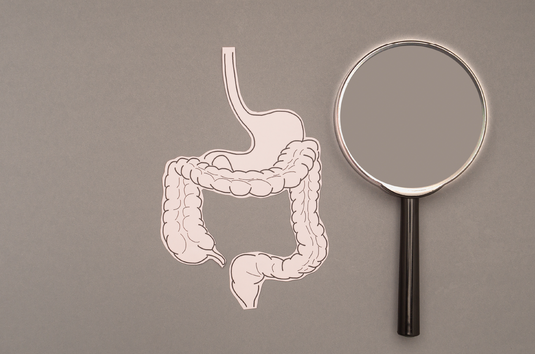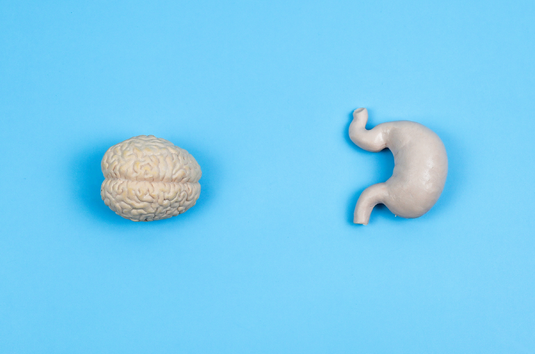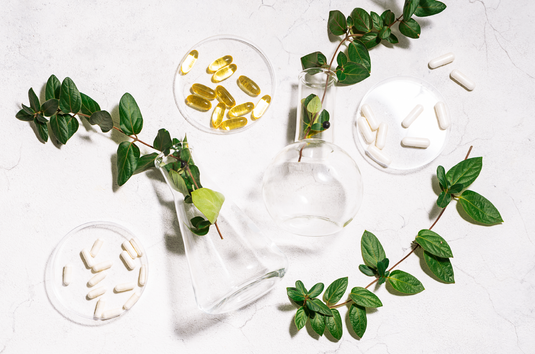Can Fish Oils Benefit the Microbiome?

From our brains to our hearts to our knees and joints, omega-3 fatty acids provide us with so many health benefits. But can omega-3s benefit our gut microbiomes? Research says, “Yes!”
We all live with our own personal microbiome – a highly diverse ecosystem that we coexist with IN and ON our bodies. A healthy microbiome is a diverse microbiome, with a population of many different types of microbial inhabitants. But unfortunately, many of us have less diversity in our gut microbiome than we should. The good news is that in addition to taking a quality probiotic and prebiotic, omega-3 fish oils can help to improve the diversity of our bacterial ecology.
One study looked at data from 876 female twins and found those with higher omega levels were likely to have higher microbiome diversity[1]. Other studies have shown that women who consume higher omega-3s in pregnancy have lower markers of intestinal permeability, and greater microbiota diversity.
Geek moment: how do omegas improve microbial diversity? Higher levels of omega-3 fatty acids in our tissues signal an important enzyme called intestinal alkaline phosphatase (IAP). IAP helps to control microbial growth, maintain diversity and can help to strengthen the intestinal lining!
Omegas can also stimulate other healthy things in the gut. In a small study, a 45-year old healthy physically active male, whose diet included red meat and vegetables, was given a fish protein only diet with vegetables, with over 600 mg of omega-3 fatty acids daily. The study found that the increase in omegas produced “significant changes” to his gut microbiota, and concluded that this could explain why omegas are so beneficial for prevention and management of chronic diseases[2]. The study subject also had an increase in butyrate-producing bacteria after two weeks.
Geek moment: what is butyrate? Butyrate is a short chain fatty acid that can be found in butter, ghee and raw milk. But our bodies can make our own butyrate – our gut bacteria make butyrate by fermenting fibre in our gut. Butyrate is so beneficial for us because it’s the ideal “food” for epithelial cells in the gut – it helps to nourish and protect gut tissue, and has anti-inflammatory and immune signalling properties.
For best results, take probiotics alongside your omega. A randomized, controlled clinical trial found that supplementing with a probiotic plus an omega-3 improved insulin sensitivity, lipid profile and other markers of cardiovascular disease better than a probiotic alone![3] They are better together:
This can impact the entire body – a healthy gut with a healthy population of diverse bacteria has been linked to lower inflammation[6].
Double up with the best: Ensure you’re buying a potent, multi-strain probiotic with guaranteed delivery, and an omega-3 fish oil that comes from a pure source and is formulated with high EPA and DHA.
The gut microbiome is an amazing area of study, with a lot still to be understood. A groundbreaking report was released in June of 2017, which recommended that omegas and phytochemicals like polyphenols act like prebiotics, that the very definition of prebiotics should be expanded to include them[7].
[1] Menni C et al. Omega-3 fatty acids correlate with gut microbiome diversity and production of N-carbamylglutamate in middle aged and elderly women. Scientific Reports volume 7, Article number: 11079(2017) doi:10.1038/s41598-017-10382-2.
[2]Noriega B et al. Understanding the Impact of Omega-3 Rich Diet on the Gut Microbiota. Case Rep Med. 2016; 2016: 3089303. Published online 2016 Mar 14. doi: 10.1155/2016/3089303
[3]Rajkumar, H. et al. Effect of probiotic (VSL#3) and omega-3 on lipid profile, insulin sensitivity, inflammatory markers, and gut colonization in overweight adults: a randomized, controlled trial. Mediators of inflammation 2014, 348959, doi: 10.1155/2014/348959 (2014).
[4]Kaliannan K et al. A host-microbiome interaction mediates the opposing effects of omega-6 and omega-3 fatty acids on metabolic endotoxemia. Sci Rep. 2015 Jun 11;5:11276. doi: 10.1038/srep11276.
[5]Barret E et al. Bifidobacterium breve with α-linolenic acid and linoleic acid alters fatty acid metabolism in the maternal separation model of irritable bowel syndrome. PLoS One. 2012;7(11):e48159. doi: 10.1371/journal.pone.0048159. Epub 2012 Nov 20.
[6]Claesson, M. J. et al. Gut microbiota composition correlates with diet and health in the elderly. Nature 488, 178–184, doi: 10.1038/nature11319 (2012).
[7] Gibson Glenn et al. Expert consensus document: The International Scientific Association for Probiotics and Prebiotics (ISAPP) consensus statement on the definition and scope of prebiotics. Nature Reviews Gastroenterology & Hepatology volume14, pages491–502 (2017) doi:10.1038/nrgastro.2017.75.
Omegas and Diversity of the Microbiome
We all live with our own personal microbiome – a highly diverse ecosystem that we coexist with IN and ON our bodies. A healthy microbiome is a diverse microbiome, with a population of many different types of microbial inhabitants. But unfortunately, many of us have less diversity in our gut microbiome than we should. The good news is that in addition to taking a quality probiotic and prebiotic, omega-3 fish oils can help to improve the diversity of our bacterial ecology.
One study looked at data from 876 female twins and found those with higher omega levels were likely to have higher microbiome diversity[1]. Other studies have shown that women who consume higher omega-3s in pregnancy have lower markers of intestinal permeability, and greater microbiota diversity.
Geek moment: how do omegas improve microbial diversity? Higher levels of omega-3 fatty acids in our tissues signal an important enzyme called intestinal alkaline phosphatase (IAP). IAP helps to control microbial growth, maintain diversity and can help to strengthen the intestinal lining!
Omegas and Gut Health
Omegas can also stimulate other healthy things in the gut. In a small study, a 45-year old healthy physically active male, whose diet included red meat and vegetables, was given a fish protein only diet with vegetables, with over 600 mg of omega-3 fatty acids daily. The study found that the increase in omegas produced “significant changes” to his gut microbiota, and concluded that this could explain why omegas are so beneficial for prevention and management of chronic diseases[2]. The study subject also had an increase in butyrate-producing bacteria after two weeks.
Geek moment: what is butyrate? Butyrate is a short chain fatty acid that can be found in butter, ghee and raw milk. But our bodies can make our own butyrate – our gut bacteria make butyrate by fermenting fibre in our gut. Butyrate is so beneficial for us because it’s the ideal “food” for epithelial cells in the gut – it helps to nourish and protect gut tissue, and has anti-inflammatory and immune signalling properties.
Double Up for Better Health!
For best results, take probiotics alongside your omega. A randomized, controlled clinical trial found that supplementing with a probiotic plus an omega-3 improved insulin sensitivity, lipid profile and other markers of cardiovascular disease better than a probiotic alone![3] They are better together:
- Omega-3 fish oils can make your probiotics work better: EPA, one fatty acid found in fish oil has been found to help probiotics “stick” to intestinal cells and boost bifido bacteria levels[4].
- Probiotics can help to make fish oils work better by increasing DHA and EPA levels in the brain[5].
This can impact the entire body – a healthy gut with a healthy population of diverse bacteria has been linked to lower inflammation[6].
Double up with the best: Ensure you’re buying a potent, multi-strain probiotic with guaranteed delivery, and an omega-3 fish oil that comes from a pure source and is formulated with high EPA and DHA.
The Future of Omega-3s and Gut Health
The gut microbiome is an amazing area of study, with a lot still to be understood. A groundbreaking report was released in June of 2017, which recommended that omegas and phytochemicals like polyphenols act like prebiotics, that the very definition of prebiotics should be expanded to include them[7].
References
[1] Menni C et al. Omega-3 fatty acids correlate with gut microbiome diversity and production of N-carbamylglutamate in middle aged and elderly women. Scientific Reports volume 7, Article number: 11079(2017) doi:10.1038/s41598-017-10382-2.
[2]Noriega B et al. Understanding the Impact of Omega-3 Rich Diet on the Gut Microbiota. Case Rep Med. 2016; 2016: 3089303. Published online 2016 Mar 14. doi: 10.1155/2016/3089303
[3]Rajkumar, H. et al. Effect of probiotic (VSL#3) and omega-3 on lipid profile, insulin sensitivity, inflammatory markers, and gut colonization in overweight adults: a randomized, controlled trial. Mediators of inflammation 2014, 348959, doi: 10.1155/2014/348959 (2014).
[4]Kaliannan K et al. A host-microbiome interaction mediates the opposing effects of omega-6 and omega-3 fatty acids on metabolic endotoxemia. Sci Rep. 2015 Jun 11;5:11276. doi: 10.1038/srep11276.
[5]Barret E et al. Bifidobacterium breve with α-linolenic acid and linoleic acid alters fatty acid metabolism in the maternal separation model of irritable bowel syndrome. PLoS One. 2012;7(11):e48159. doi: 10.1371/journal.pone.0048159. Epub 2012 Nov 20.
[6]Claesson, M. J. et al. Gut microbiota composition correlates with diet and health in the elderly. Nature 488, 178–184, doi: 10.1038/nature11319 (2012).
[7] Gibson Glenn et al. Expert consensus document: The International Scientific Association for Probiotics and Prebiotics (ISAPP) consensus statement on the definition and scope of prebiotics. Nature Reviews Gastroenterology & Hepatology volume14, pages491–502 (2017) doi:10.1038/nrgastro.2017.75.

